In our glasses/mugs:
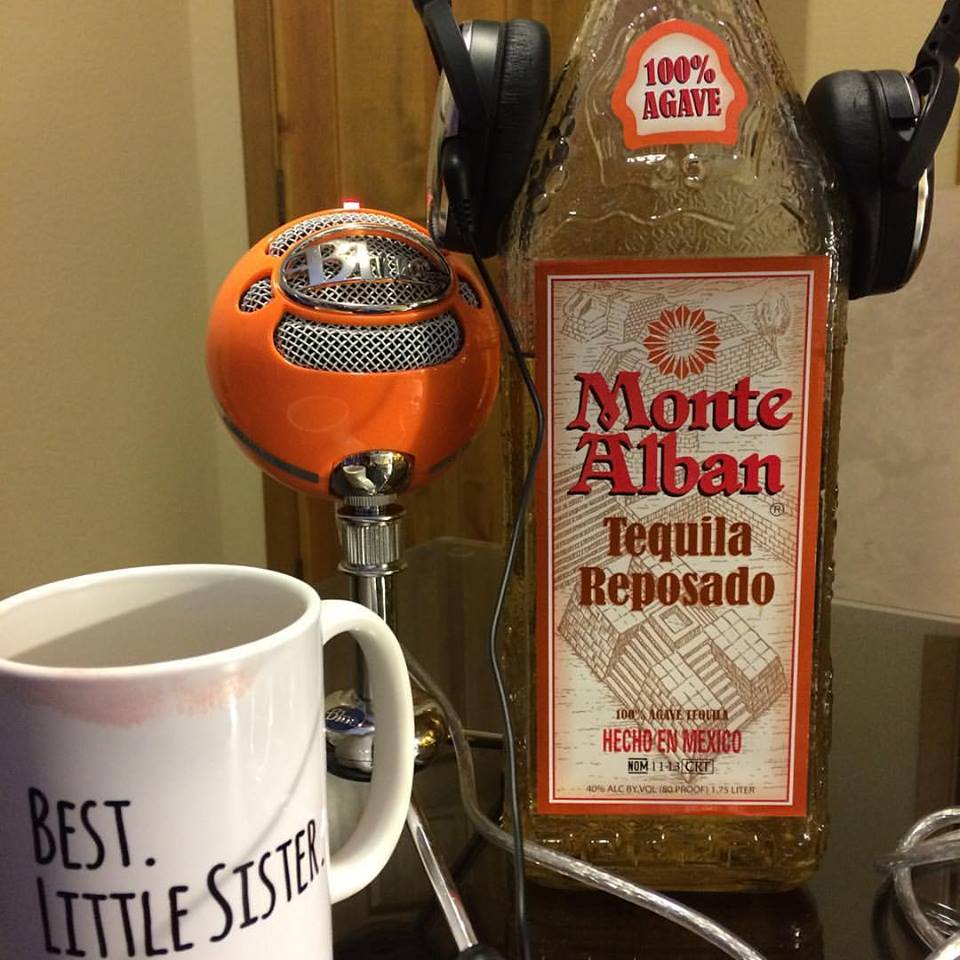
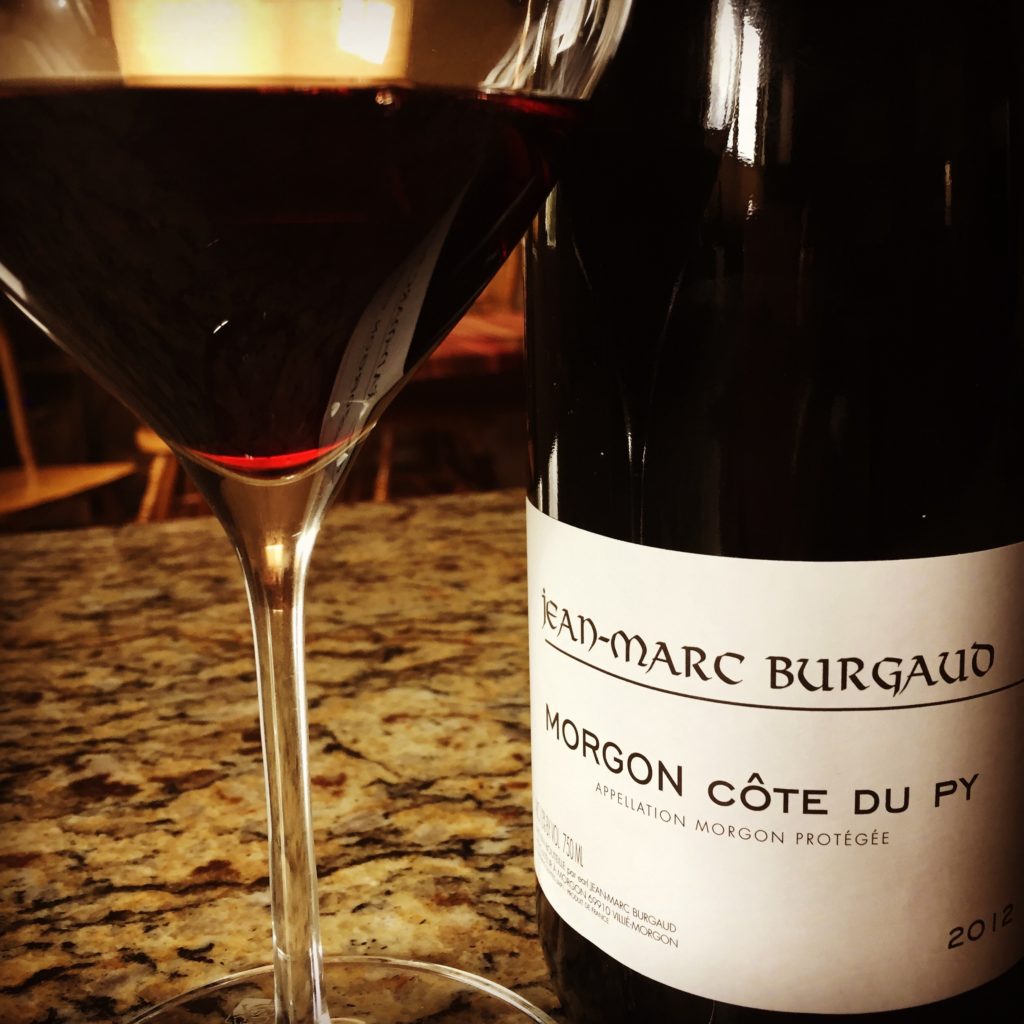 Steph: Tequila Toddy made with Monte Alban Tequila Reposado ($15.99/750mL), agave nectar, honey, hot water, thick lemon wedge, and light sprinkles of cinnamon and clove.
Steph: Tequila Toddy made with Monte Alban Tequila Reposado ($15.99/750mL), agave nectar, honey, hot water, thick lemon wedge, and light sprinkles of cinnamon and clove.
Val: Finally coordinated the beverage and discussion topic. Whoa, what a concept! She was drinking Jean-Marc Burgaud, Morgon Cote du Py (Appellation Morgon Protegee), 2012. And here’s a kicker, not only did they use the AOP vs AOC on the label, but right under that it says “Red Burgundy Wine.”
Discussion Topic: Beaujolais!
Ahh, Beaujolais. It sounds, oh, I don’t know, pretty. And it is! “Beau” means “beautiful in French, although there is a town in this famous wine region in France that is actually called Beaujeau, and it was from the Dukes of Beajeau, the 10th century rulers of the region, that the growing area derived its name.
When we think of the wine from this region it’s often common to think of the the Gamay-based wines that are released on the third Thursday of November around which there is much celebration. I’m speaking of the Beaujolais Nouveau. Well, hang on to your hats, listeners, because we have a factoid-jammed show of Beaujolais treats for you this week.
First, did you know that it was in the 1950’s where the drinking of newly vinified wines became en vogue? While we’d like to credit the Parisians for all things fashion and hip, it was actually the people of Lyon who were partaking of this tradition (among other regions, too, remember the Vino Novello of Italy we mentioned a few episodes back, but we’re talking about the Beauj here.)
So it was that the Union Interprofessionelle des Vins du Beaujolais (UIVB) formalized the release of new wines, there called en primeur (for the first wines made after the current year’s harvest). The release of the Beaujolais Nouveau became a recognized annual event on the 15th of November every year effective 1951.
But you’re thinking, “Back up the Beauj truck, ladies. Didn’t you say the third Thursday in November?” Well, yes, fair listeners, and very astute of you to point that out. In 1985 the date was changed by the Institut National des Appellations d’Origine (INAO) to the much vaunted third Thursday in November. “Beaujolais Nouveau Day” officially begins at one minute past midnight, at which time you may open the bottles. This is the red, fruity, easy to drink wines that make great holiday table additions, but did you know there is a Beaujolais Nouveau rose’ as well? They are rare, but they exist!
However, there’s more to Beauloais than the nouveau style! There are the Beaujolais Villages (which can also play in the Nouveau reindeer games), Superieur, and the 10 crus.
First let’s talk about the Beaujolais appellation which was delimited in 1937. This encompasses the 96 villages which can make red, rose’, white and even contribute grapes, like Pinot Noir, Chardonnay, and their hallmark Gamay, to Cremant de Bourgogne sparkling wines of Burgundy!
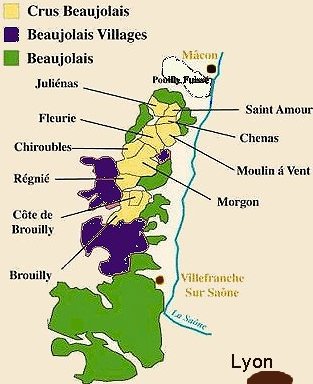
Beaujolais map & more info can be found on http://wineroutesfrance.com/38.html
Furthermore the red and rose’ wines used to be able to add up to 15% Pinot Noir, but that was phased out last year. The Beaujolais Blanc, or white Beaujolais can be made with Chardonnay and Aligote’ grapes. Do these sound familiar? As in, hey, you can’t get over on us! You said these were Burgundy’s signature white grapes! Well, they are, but remember, Burgundy and Beaujolais are neighbors and we also mentioned there are appellations that can be made with grapes from both areas. Crazy, right?
What’s also crazy is that about the time the whole Beauj Nouveau thing was becoming a formal deal, the Beaujolais Villages appellation was being born – in 1950, to be exact. So of those 96 villages Steph mentioned earlier, 38 of them can actually append the name of their village onto the “Beaujolais Villages” labeling. For these wines the minimum abv is a little higher – 10% versus the regular 9.5% for red and rose’ wines; 11% for the Beaujolais Villages whites versus the minimum 10.5% for Beaujolais AOC whites.
As for the style, these Villages-named wines will be (generally) more complex and offer up more structure, tannins and ageability. The vine density, training and wine making rules are different, and these wines will display much more terroir personality from the distinctive granite soils and minerality, stony characteristics will manifest themselves in the wine.
But then we have the crus. These have even stricter rules still, in terms of planting, harvesting and wine making.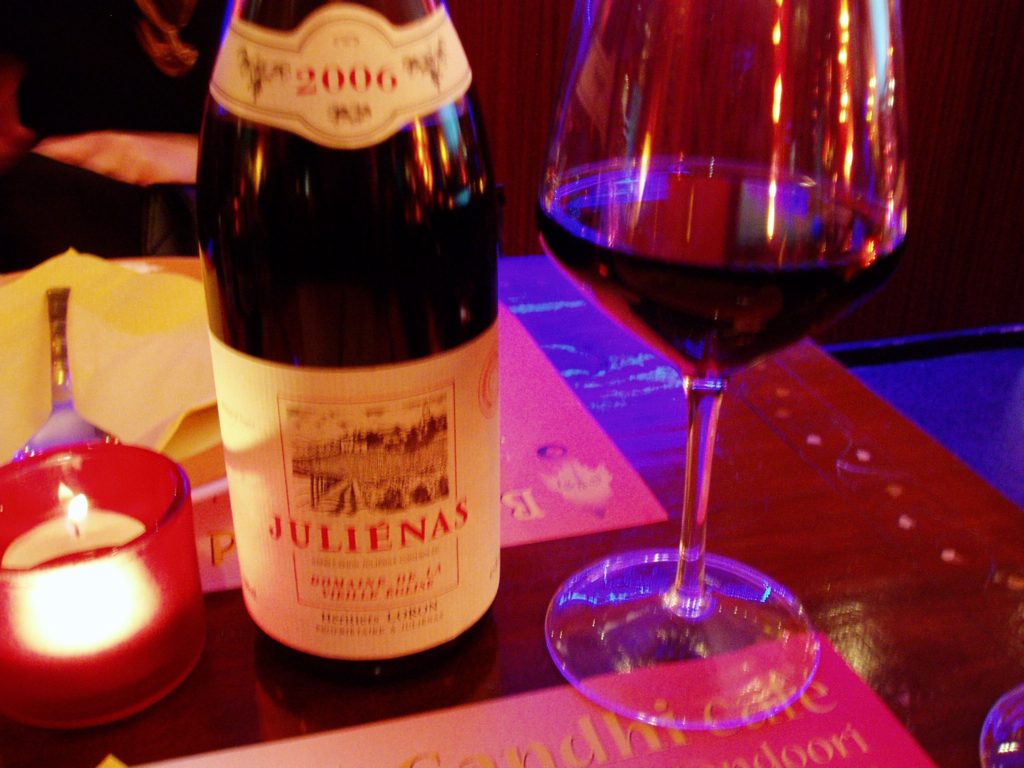
- First, they all only make red wines.
- There are 10 crus, and each of the crus has their own climats or villages considered special enough to own some of that label real estate.
— Starting from the north we have St. Amour – thing of it as “Saint Love”
— Then we have Julienas, that has at least two of their villages named after Julius Caesar.
— Chenas is the smallest and because of this the bottlings are harder to find
— Moulin-a-Vent (windmill) is known to make some of the more tannic, full bodied of the crus and have some of the longest aging potential. (King of Beaujolais)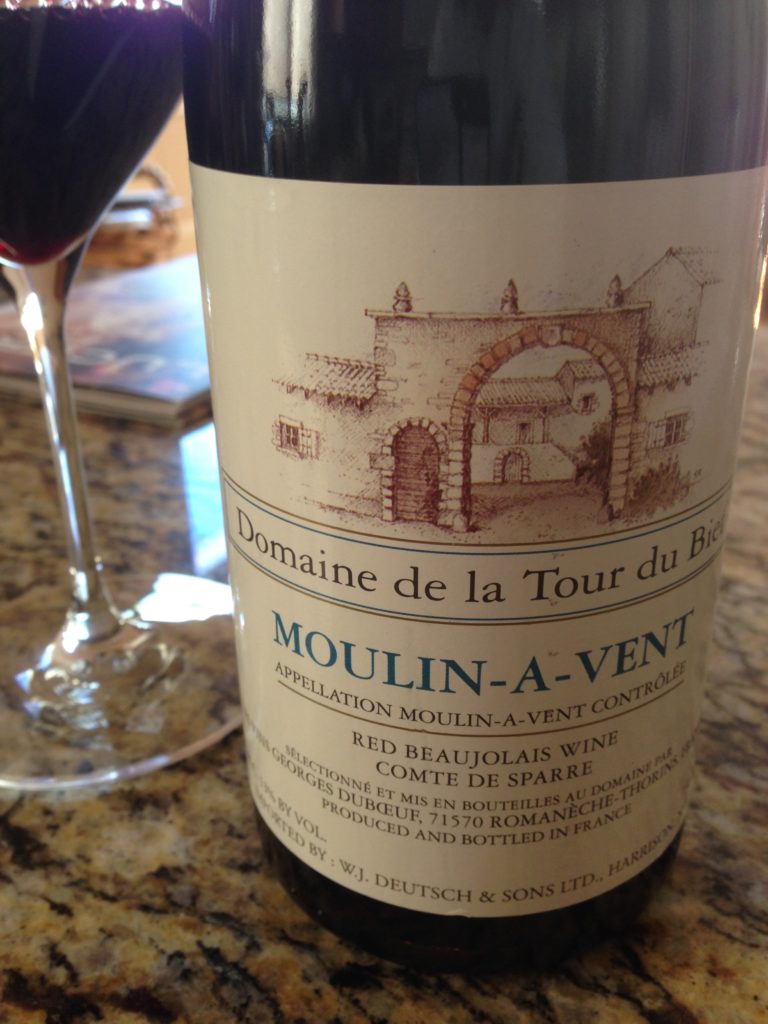
— Fleurie, as you can imagine, are some of the most feminine, floral wines.
— Chiroubles is from the highest altitude of the crus, the coolest, and if you think about it would make some of the paler and therefore lightest, fruity expressions.
— Morgon was in Val’s glass during the show, as was the climat Cote du Py, one of the six climats that are considered special enough to ride on the bottle.
— Regnie has only been an appellation since the late 1980s (1988) and is the newest of the 10 crus. All the other cru appellations were established in the 1930s and 1940s. Another fun fact is that this cru must be 100% Gamay. All the others, except for our next one, can have up to 15% Chardonnay, Aligote & Melon.
— Cote de Brouilly does need some time in bottle to really open up, and slides down the slopes of Mt. Brouilly. As I mentioned earlier, this cru can add other grapes. It used to be able to add PN in addition to the Chard, Aligote & Melon, but PN was phased out last year.
— This makes the last cru, but not least because it is the largest, Brouilly. You can guess it is named after the mountain I just mentioned, and it is the furthest south, warmest, and actually encompasses Cote de Brouilly.
Still hungry thirsty? We invite you to revisit or listen to our Burgundy Basics episode #78!
Factoid: What is Irish moonshine called? – answer = poteen
It is traditionally distilled in a pot still from grain, cereal, potatoes, sugar beets, whey and molasses. The Irish word “pota” means pot and the word “poit” means hangover. This is just fun trivia that came up during a recent wine lunch with my wine crazies in FoCo. Little did I know about Irish moonshine. As you can imagine, quality varies significantly and watch out for the poteen that causes blindness.
Wino Radar:
Val: UK Wine Show podcast: has two episodes that cover Cru Beaujolais and the Nouveau.
Steph: In the Drink Podcast on Heritage Radio Network and hosted by Joe Campanale
Shoutouts:
Steph: I’ve always loved wine shopping online at Kermit Lynch Wine Merchant. Here’s the linky-link to what Beaujolais bottles they have in stock.
#W25Challenge Update:
Remember this quarter’s competition and the 2016 Sipping Challenge ends on 31 December. These are some of the latest entries:
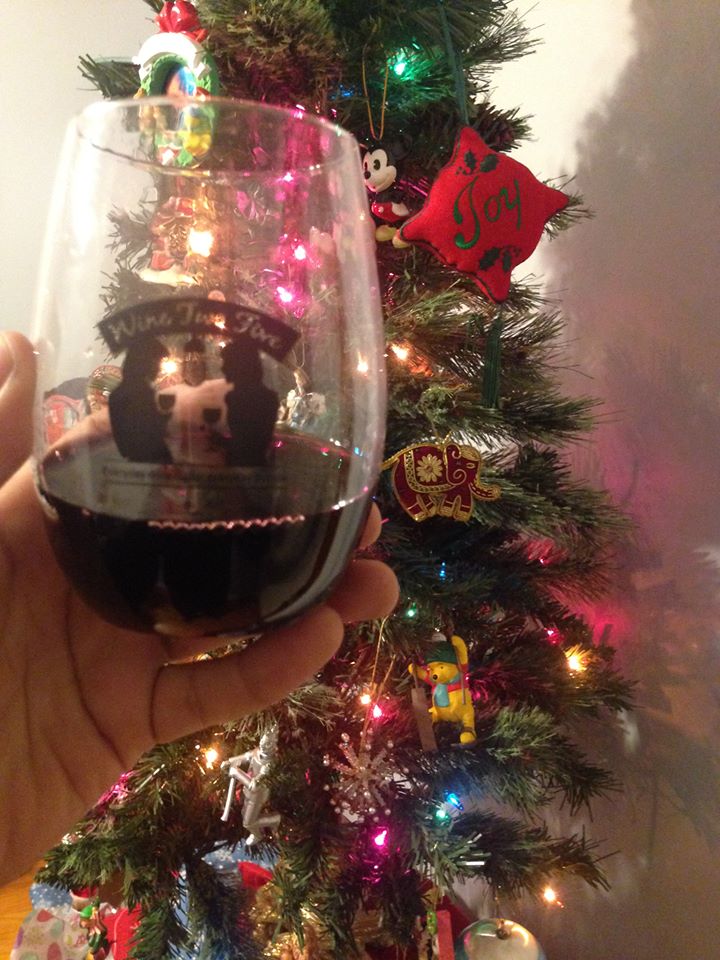
Andrew:
This is truly going to be a happy holiday season!!! Thanks Stephanie Davis and Valerie Caruso for the sweet gift. #WineTwoFive podcast #W25Challenge Morellino di Scansano
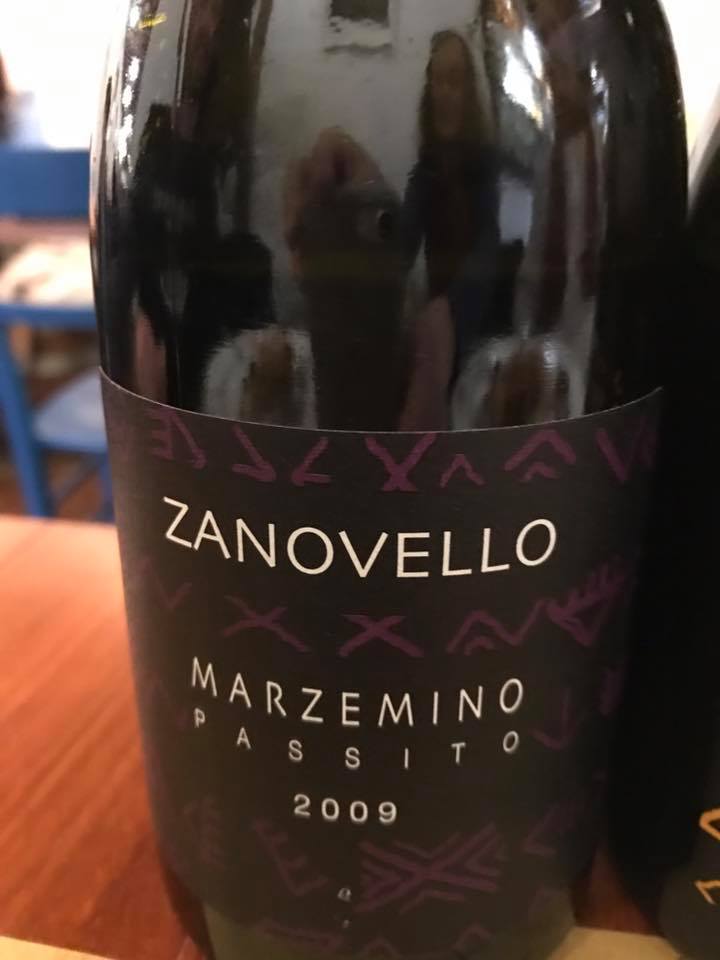
Lynn: #W25Challenge goes sweeeet! The Marzemino grape done passito style. A new grape for me- deep black cherry, black berry, a touch of spice nose.
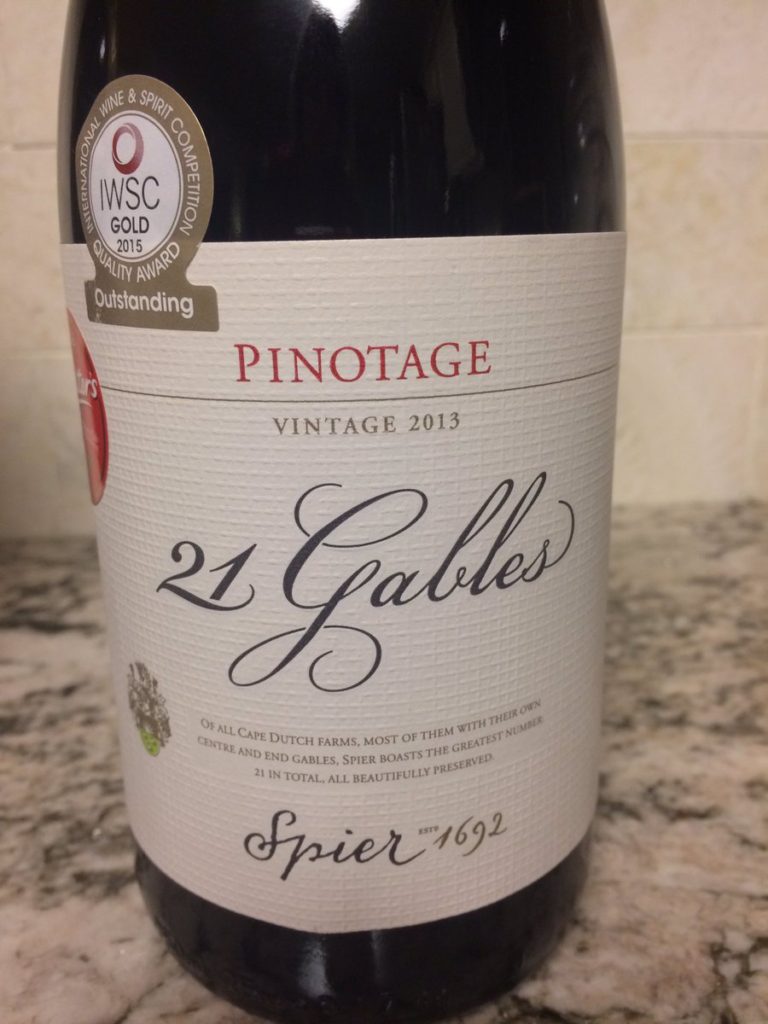
Side Hustle Wino: CSW prep class #11 drink a long wine. I don’t think I’ve ever had Pinotage! #W25challenge #pinotage #wine #southafrica #spier1962 #21gables
Patreon Love:
Jeff E from the hilarious drinking show, We Like Drinking
“It’s not five o’clock and we don’t care” listeners: Thank you:
- Meg from South Dakota!
- Clay from Arizona!
- Jon in California!
- Andrew in Illinois! (Check out his Patreon Swag in the pic above!)
- Our newest supporter in Nevada, Michelle!
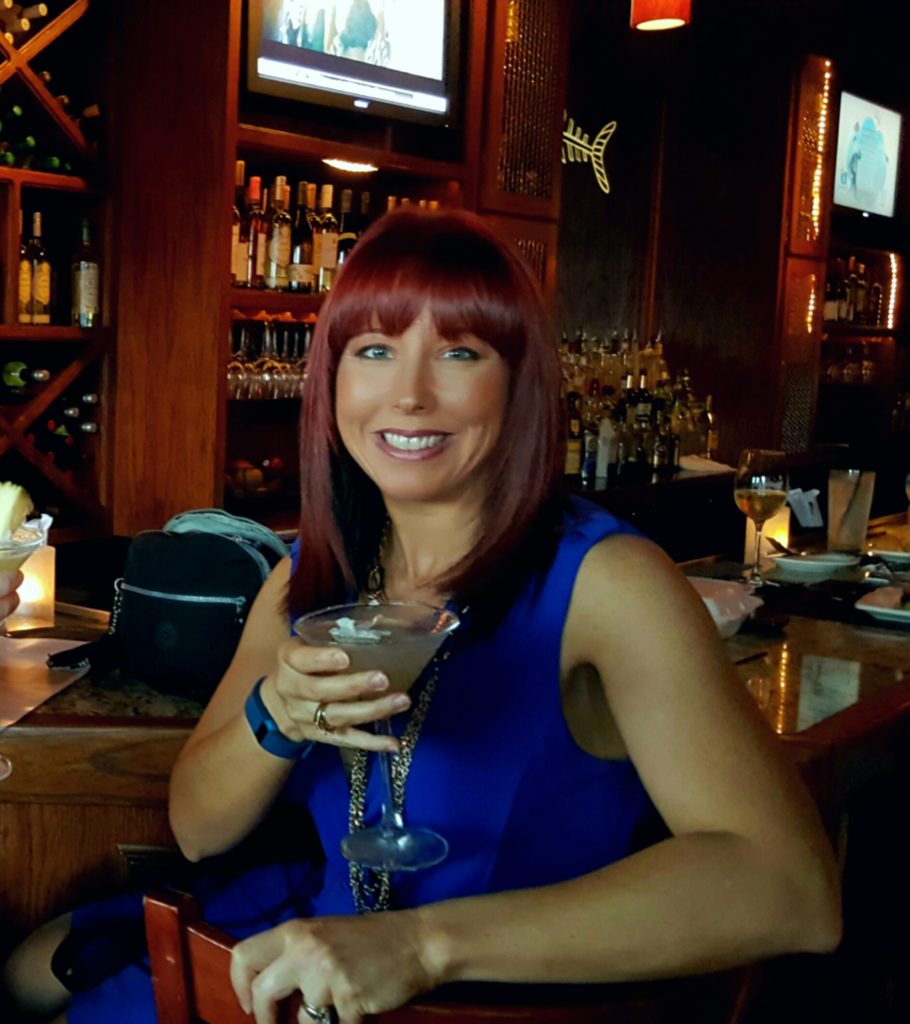
A little bit about Michelle: you may remember her from Episode 84 and the winner of our third quarter #W25Challenge. She is a Certified Specialist of Wine (CSW) and a Certified Sommelier (CS) through the Court of Master Sommeliers. She enjoys any and every opportunity to taste, drink, talk and learn about wine. Michelle is an East Coast transplant to Reno NV who loves traveling around wine regions discovering and learning about all the beautiful things the grape has to offer.
We are so happy she’s joined the pack of Patreon supporters. Welcome, Michelle! You can connect with her on Twitter as @Reno_Wine and Instagram.
You ALL will be entered in our “Exotic Wine Travel Patreon Giveaway.” Charine Tan and Dr. Matthew Horkey were kind enough to send us an extra copy of their book, Uncorking the Caucasus: Wines from Turkey, Armenia, and Georgia. And It’s not too late to enter! The contest ends January 1st. For more details, go to our Patreon Page https://www.patreon.com/winetwofivepodcast.
We thank you for being a vital part of the W25 listening and sipping community.
Share the Love:
If you love Wine Two Five then we know you’ll share our show with your friends and online community, and we certainly appreciate all your involvement and feedback. Leave us a burning wine question or comment on speakpipe. iTunes love is always appreciated in the form of a glowing iTunes review as well. For your listening pleasure, whether IOS or Android, we are also on iHeartRadio!
Come play with us on our FB page, Twitter, Pinterest & YouTube, Google+ spaces if you’d like. Also, you can build your collection of wine books & accessories at our online store also located on our website!
Connect with Val on Twitter @WineGalUnboxed and on the Vino With Val FB page, and on instagram as Vino with Val.
Steph is on Twitter @Albarellosoap and on the AlbarelloSoap FB page, and check out the videos on the Albarello YouTube channel! Steph is also on instagram as the Wine Heroine.
One more thing … don’t forget to use the #W25Challenge when you are trying new wines and drinks to win an opportunity to co-host the show with us.